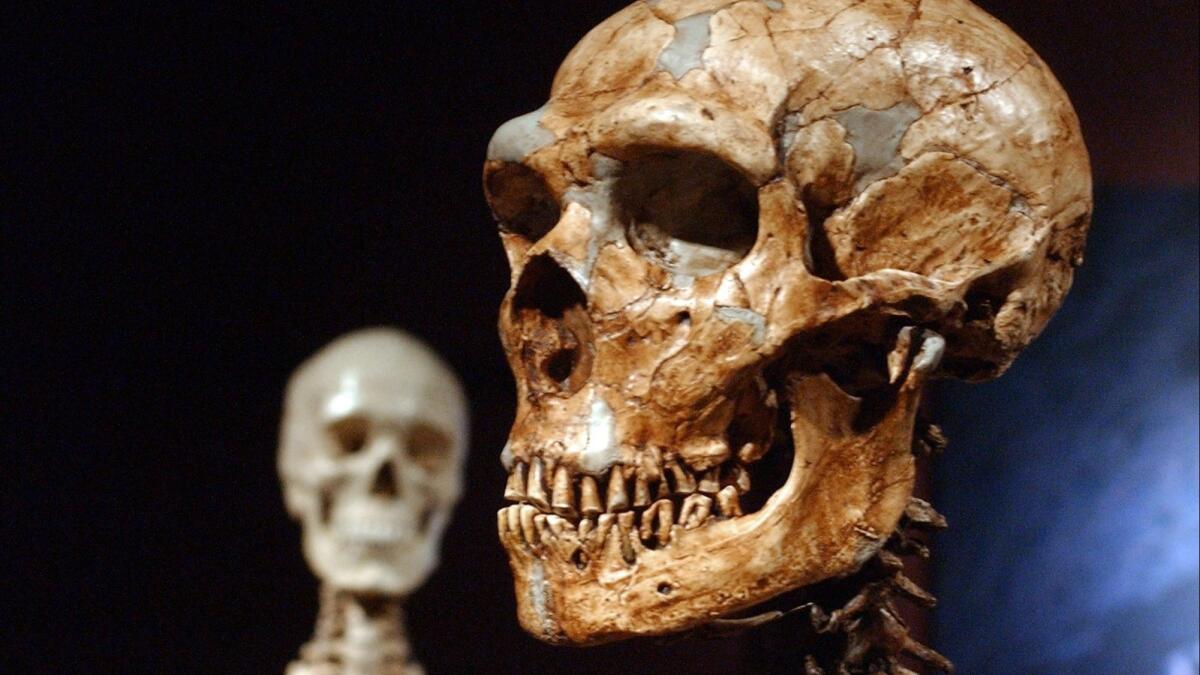Research suggests another way Neanderthals were like us: They could start their own fires

Humans may not have been the only hominids who knew how to start a fire long ago. New research suggests that as early as 50,000 years ago, Neanderthals wielded this power as well.
The work, published Thursday in Scientific Reports, provides new evidence that Neanderthals may have created flames-on-demand by striking a small piece of pyrite against a biface â their favorite mutlipurpose stone tool.
For the record:
12:45 p.m. July 26, 2018As many readers have noted, there is a wording error in this story. Early humans did not use steel to start fires as is stated in the text.
Scientists already knew that Neanderthals were able to control and use fire, but controlling it and producing it are not the same thing, said Andrew Sorensen, a doctoral student in archaeology at Leiden University in the Netherlands who led the work.
âThere is an ongoing debate in the world of early fire research as to whether Neanderthals could make fire for themselves, or if they were reliant on natural sources like wildfires started by lightning strikes from which they could collect fire later,â he said.
Early humans created fire by striking steel or pyrite against flint to create a shower of sparks, Sorensen said. The sparks fell on tinder, causing it to smolder. Then they would place a piece of that smoldering material into a bundle of dried grass, for example, and gently blow it into a flame.
Sorensen wondered if Neanderthals might have employed a similar technique.
To answer that question, he experimented with creating fire himself by striking a piece of pyrite against a replica of a biface. Then he compared the marks he made on his biface to marks on 50,000-year-old bifaces collected in several locations in France.
Bifaces are palm-sized, teardrop-shaped, multipurpose stone tools that functioned like a Neanderthal Swiss army knife.
They carried them around with them as they moved from place to place and used them to butcher and skin animals, as well as to grind minerals into powder and to create other tools.
Sorensen said that the method of striking a small piece of pyrite against a biface was quite effective at producing sparks, although the results were variable.
âSome strikes produced only one spark, others produced showers of up to 10 sparks or so,â he said.
He also found that the microscopic mineral traces made by striking or rubbing flint against his modern-day biface to create sparks were similar to those found on the ancient bifaces he examined.
To make sure that the traces couldnât have been made in other ways, he also experimented with using his stone tool to perform other tasks like grinding ochre to make pigment and using it to carve another flint tool.
Indeed, he found that the same mineral traces that were left on the ancient tools most closely compared with the traces produced when he struck or forcefully rubbed pyrite against his own biface.
Itâs tricky business trying to reconstruct the lifestyle of hominids who lived 50,000 years ago, and Sorensen is clear that his experiments do not provide definitive evidence that Neanderthals used fire. It is always possible that there is another explanation.
âThe traces made by pyrite were the âbest fit,ââ he said. âBut there could be some other mineral material that we just didnât think of that could create similar traces.â
But until someone is able to demonstrate this, he said, fire-making appears to be the best interpretation.
And if thatâs the case, itâs just one more piece of evidence that the capabilities of Neanderthals and early modern humans were not so different after all.
Do you love science? I do! Follow me @DeborahNetburn and âlikeâ Los Angeles Times Science & Health on Facebook.
MORE IN SCIENCE




